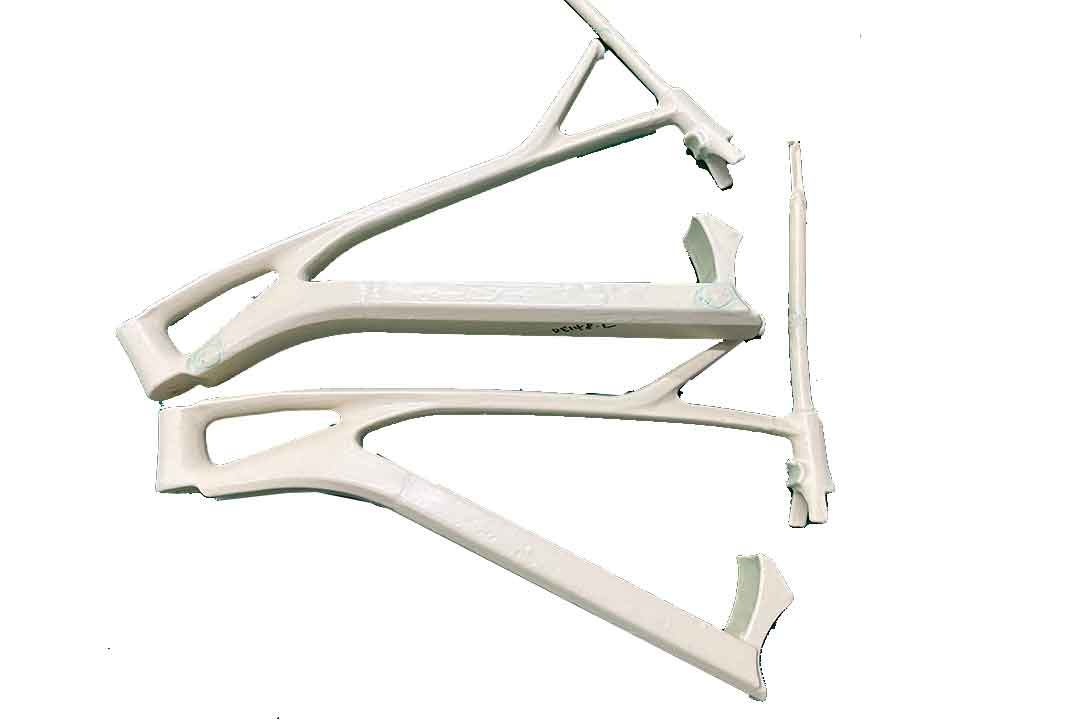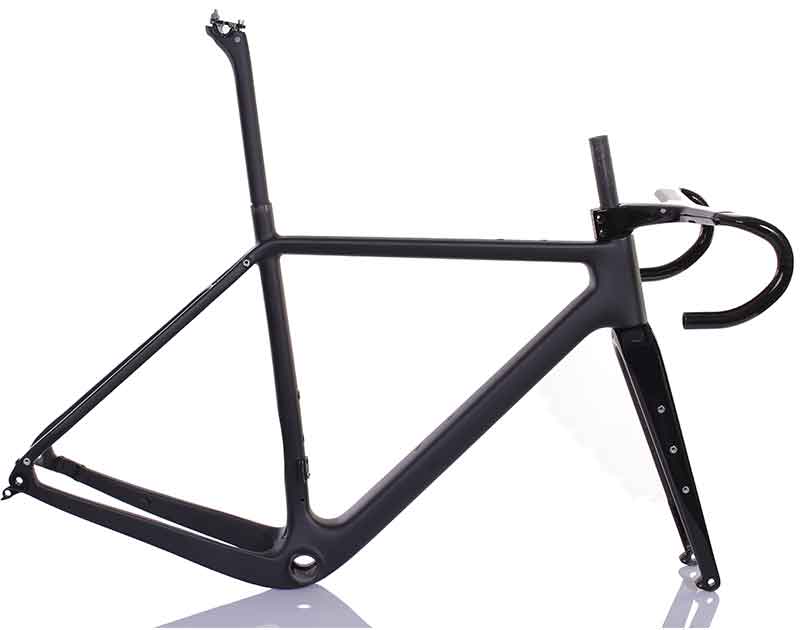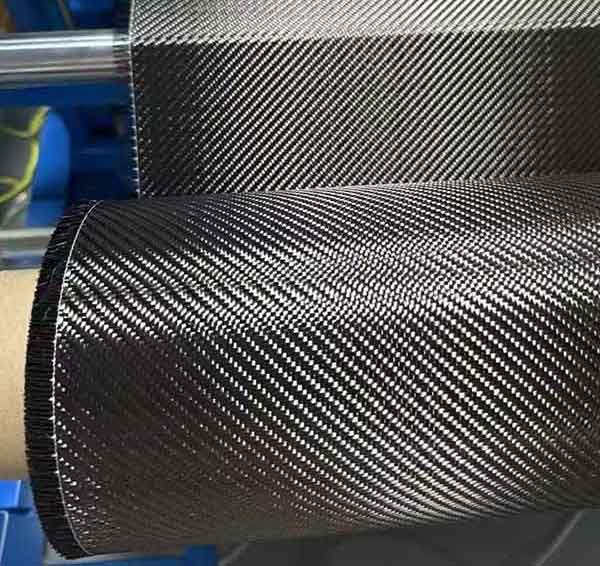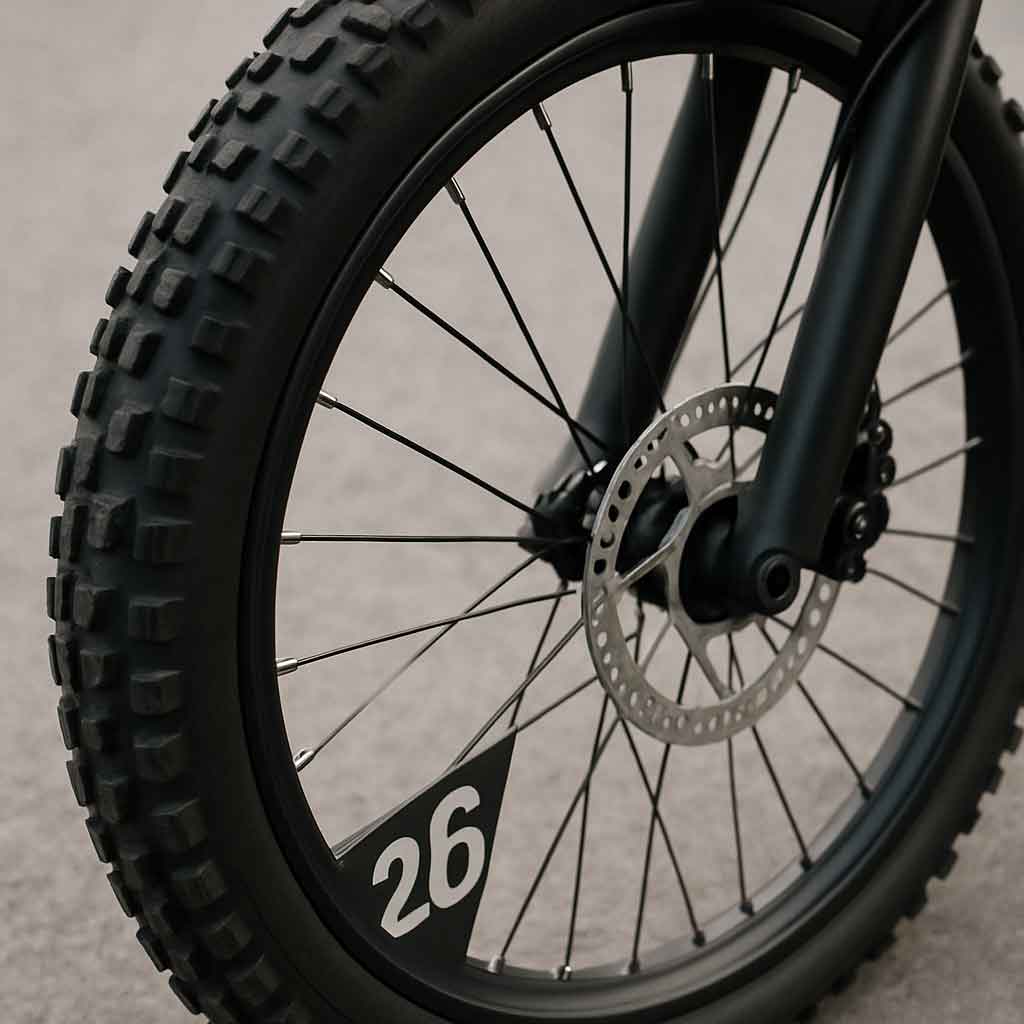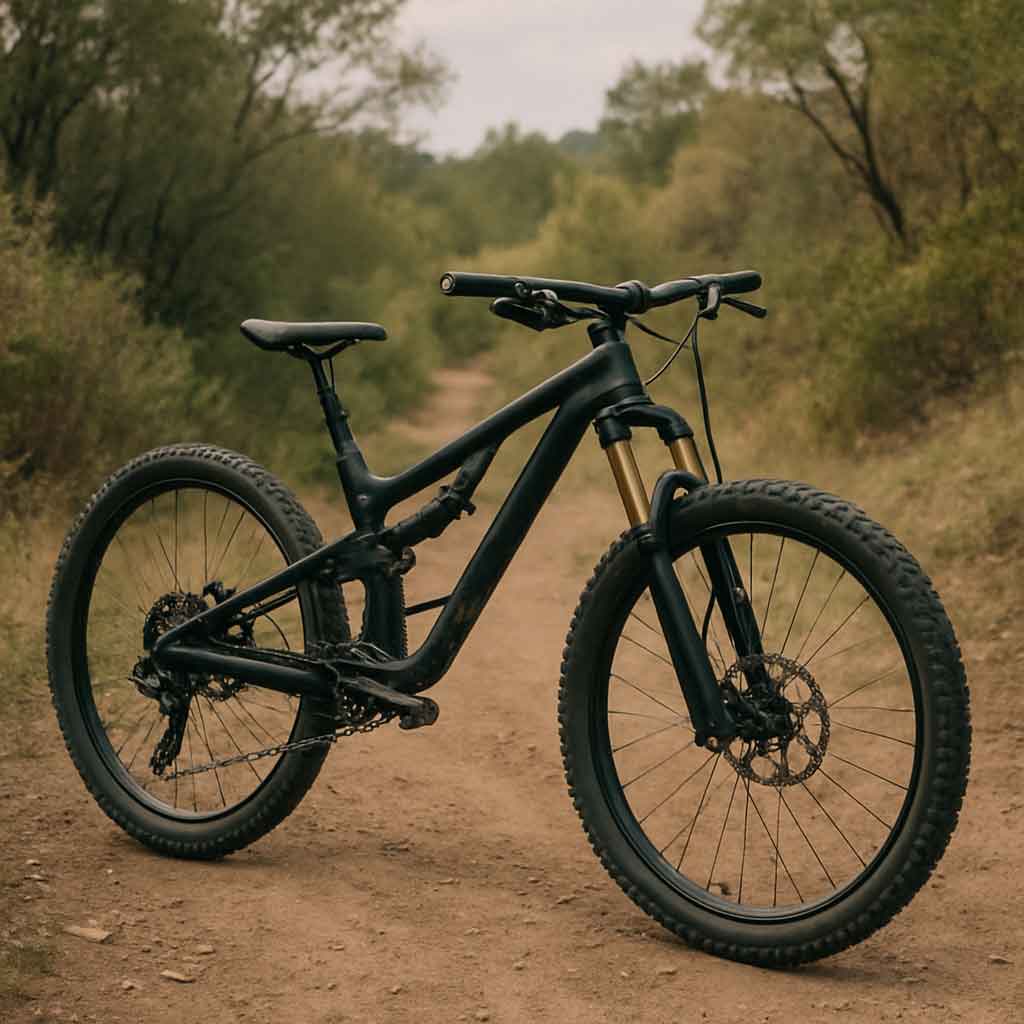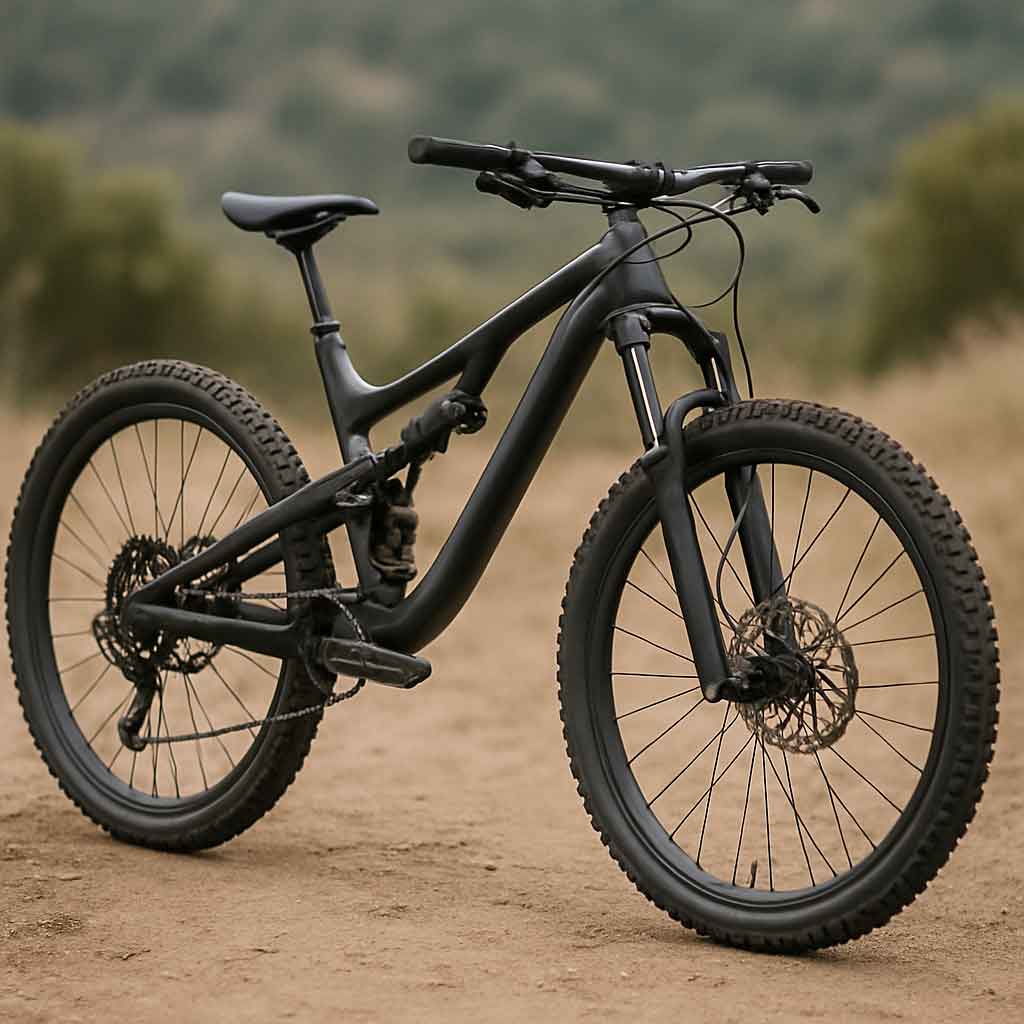Welcome to Mondince Bike - A well-known factory specialized in produce carbon bike frame and other parts since 2007.
Gravel Bike vs Road Bike Key Differences
When it comes to cycling, choosing the right bike can make all the difference in your riding experience. If you're considering a gravel bike or a road bike, it's important to understand their key differences to make an informed decision. Both bikes offer unique features tailored to different types of cycling adventures. In this article, we'll explore the distinctions between gravel bikes and road bikes, helping you determine which one is best suited to your needs.
Gravel bikes have emerged as a popular choice for cyclists who crave adventure and versatility. They bridge the gap between road biking and mountain biking, offering a unique blend of features that cater to a wide range of terrains and riding styles.
Gravel bikes are designed for versatility and can handle a wide range of terrains. They are perfect for cyclists who enjoy exploring off-the-beaten-path trails, dirt roads, and mixed surfaces. Gravel bikes usually have a relaxed geometry, making them comfortable for long rides.
- Versatility in Design: Gravel bikes are engineered to be the ultimate all-rounder. Their design allows them to transition seamlessly from smooth tarmac to rugged trails. This adaptability makes them ideal for cyclists who enjoy varying their routes and exploring new paths.
- Relaxed Geometry: The relaxed geometry of gravel bikes provides a more upright riding position. This not only enhances comfort on long rides but also offers better control over uneven surfaces. Cyclists can enjoy longer journeys without the strain that more aggressive bike geometries might cause.
- Adventure Ready: With their robust design, gravel bikes are built to take on challenging terrains. Whether you're tackling a steep hill or navigating through a forest trail, these bikes are equipped to handle it all, making them the perfect companion for adventure seekers.
Gravel bikes are equipped with features that enhance their performance across various terrains. From tire specifications to frame design, each element is crafted to offer an optimal riding experience.
- Wider Tires: Gravel bikes come with wider tires, usually ranging from 35mm to 45mm. This allows for better grip and stability on loose or uneven surfaces.
- Enhanced Grip: The wider tires provide superior traction, enabling cyclists to ride confidently on loose gravel and dirt paths. This grip is crucial for maintaining control on unpredictable surfaces.
- Improved Stability: Wider tires also contribute to the bike's stability, especially when navigating through rocky or uneven terrains. This stability is a significant advantage for cyclists who prefer off-road adventures.
- Comfort and Shock Absorption: The increased tire width helps in absorbing shocks from bumps and potholes, providing a smoother and more comfortable ride. This feature is particularly beneficial for long-distance tours.
- Frame Geometry: The frame geometry is typically more relaxed than a road bike, providing a more upright riding position. This enhances comfort, especially on long rides.
- Comfort-Oriented Design: The relaxed frame geometry prioritizes rider comfort, reducing strain on the back and shoulders. Cyclists can enjoy extended rides without discomfort.
- Enhanced Control: An upright position offers better visibility and control, which is essential when navigating through varied terrains. This control boosts the rider's confidence, especially on unfamiliar paths.
- Long-Distance Suitability: The comfortable geometry makes gravel bikes an excellent choice for long-distance touring, allowing riders to cover more miles with ease.
- Durability: Built to withstand rough conditions, gravel bikes often have robust frames and components.
- Robust Construction: Gravel bikes feature strong frames and components designed to endure the rigors of off-road cycling. This durability ensures the bike's longevity and reliability.
- Weather Resistance: Many gravel bikes are equipped with weather-resistant materials and components, making them suitable for all-season cycling. This resilience is crucial for cyclists who ride in varying weather conditions.
- Maintenance and Upkeep: The robust construction of gravel bikes often translates to lower maintenance requirements. Cyclists can spend more time riding and less time on repairs.
- Mounting Options: They are equipped with various mounting points for racks and bags, making them ideal for bikepacking and long-distance touring.
- Bikepacking Ready: The numerous mounting points allow cyclists to attach racks, bags, and other gear easily. This feature is perfect for those who enjoy bikepacking adventures.
- Customization Flexibility: Cyclists can customize their gravel bikes with additional accessories, tailoring the bike to their specific needs and preferences.
- Practical for Commuting: The mounting options also make gravel bikes a practical choice for commuting, offering space for panniers and other essentials.
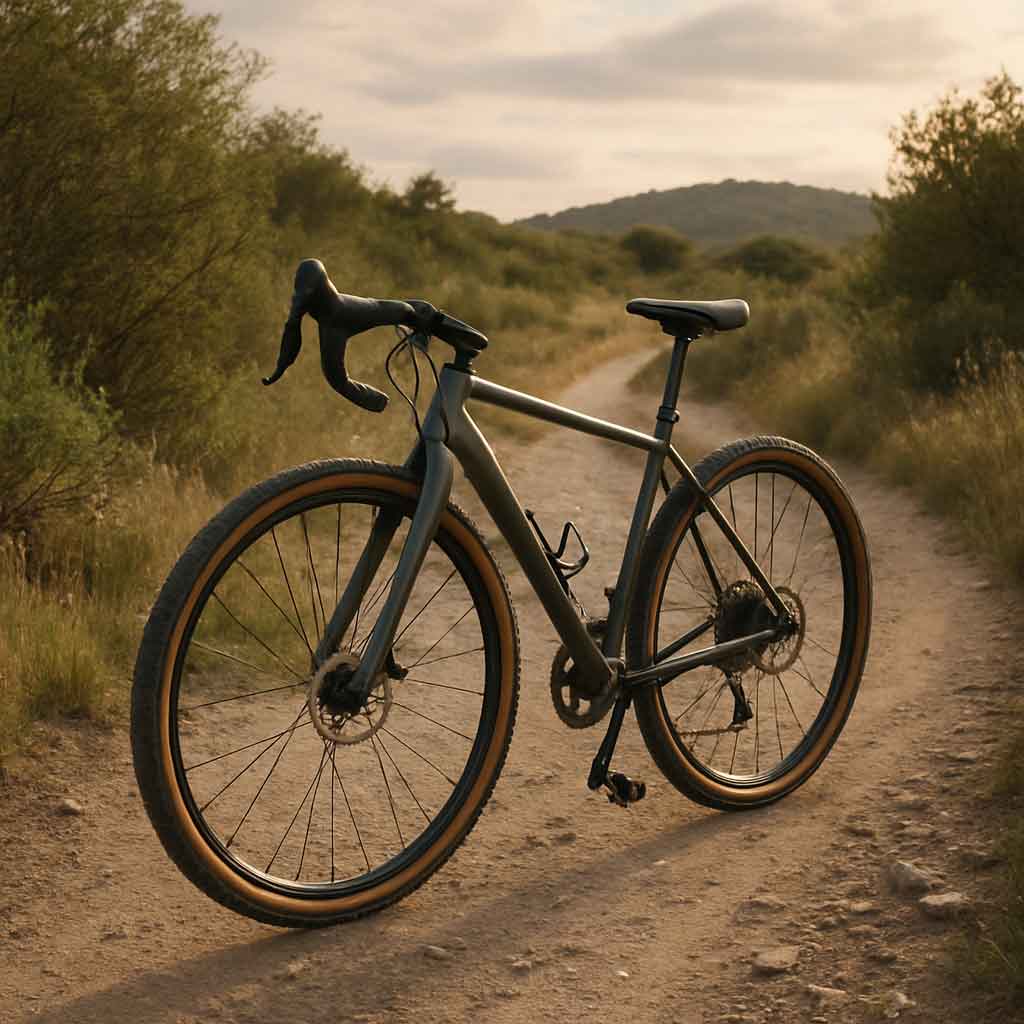
What is a Road Bike?
Road bikes are the epitome of speed and efficiency on paved surfaces. Built for performance, they are the preferred choice for cyclists who prioritize speed and precision in their rides.
Design and Purpose
Road bikes are built for speed and efficiency on paved roads. They are the go-to choice for cyclists who enjoy fast rides, racing, and long-distance road cycling. Road bikes are known for their lightweight construction and aerodynamic design.
- Speed-Focused Design: Road bikes are engineered with speed in mind. Their streamlined design and lightweight construction make them ideal for cyclists who enjoy racing or fast-paced rides.
- Aerodynamic Efficiency: The aerodynamic design of road bikes minimizes air resistance, allowing cyclists to maintain higher speeds with less effort. This efficiency is a key factor for competitive cyclists.
- Ideal for Long Distances: While road bikes prioritize speed, they are also suitable for long-distance rides, provided the terrain is smooth. Cyclists can cover substantial distances quickly and efficiently.
Key Features
Road bikes are equipped with features that enhance their speed and performance on paved surfaces. From tire specifications to frame materials, each component is designed to optimize the riding experience.
- Narrow Tires: Road bikes have narrower tires, usually between 23mm and 28mm, which reduces rolling resistance and enhances speed.
- Reduced Rolling Resistance: The narrow tires of road bikes reduce the friction between the tire and the road, allowing for faster speeds with less effort.
- Precision Handling: Narrow tires provide precise handling, making it easier for cyclists to navigate sharp turns and maintain control at high speeds.
- Suitability for Racing: The speed advantage of narrow tires makes road bikes a popular choice for competitive racing, where every second counts.
- Frame Geometry: The geometry is more aggressive, with a lower handlebar position that encourages an aerodynamic posture.
- Aggressive Posture: The lower handlebar position encourages an aerodynamic posture, reducing wind resistance and enhancing speed.
- Enhanced Control at High Speeds: The aggressive geometry provides better control at high speeds, allowing cyclists to maneuver with precision during races.
- Adaptation for Experienced Cyclists: The geometry may require adaptation for beginners, but experienced cyclists often find it beneficial for maximizing performance.
- Lightweight: Typically constructed from lightweight materials like carbon fiber or aluminum, road bikes are designed to be fast and nimble.
- Material Selection: The use of lightweight materials such as carbon fiber and aluminum contributes to the bike's nimbleness and speed.
- Ease of Climbing: The lightweight construction makes road bikes easier to climb with, offering an advantage on hilly routes.
- Portability: The lightweight nature of road bikes also makes them easier to transport, whether you're carrying them up stairs or loading them into a vehicle.
- Limited Mounting Options: Unlike gravel bikes, road bikes have limited mounting points, focusing more on speed than carrying capacity.
- Speed Over Utility: The limited mounting options reflect a focus on speed and performance rather than utility and carrying capacity.
- Minimalist Design: The minimalist design of road bikes prioritizes speed, making them less suitable for carrying extra gear or accessories.
- Focus on Racing and Speed: The limited mounting points align with the road bike's primary purpose: racing and achieving maximum speed.
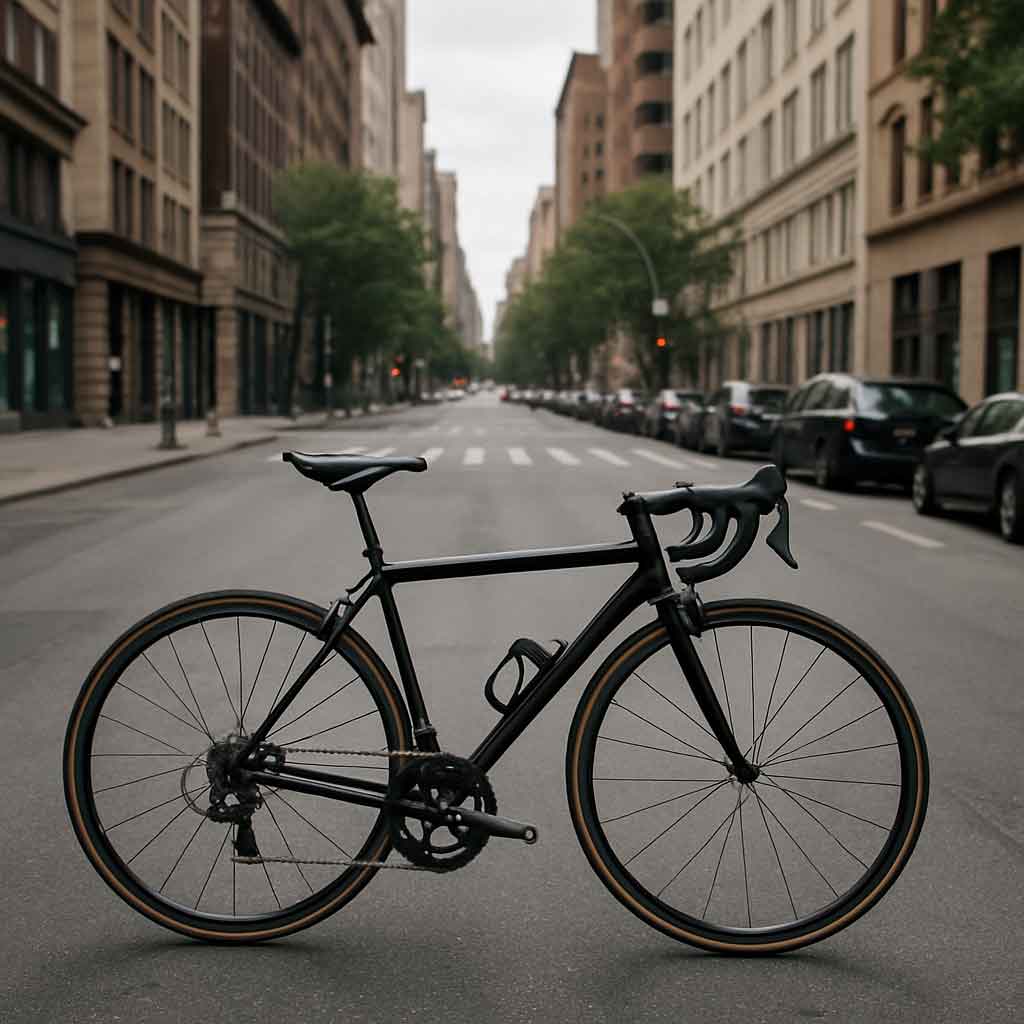
Gravel Bike vs Road Bike: Performance Differences
Choosing between a gravel bike and a road bike often boils down to performance differences. Each type of bike excels in different areas, catering to specific cycling preferences and environments.
Terrain Versatility
Gravel bikes are the champions of versatility. They can handle gravel paths, forest trails, and even tarmac roads with ease. This makes them perfect for cyclists who want to explore varied landscapes without being confined to paved roads.
- All-Terrain Capability: Gravel bikes can transition effortlessly from smooth roads to rugged trails, offering unparalleled versatility for cyclists who enjoy diverse routes.
- Unpaved Adventures: With their robust construction and wider tires, gravel bikes excel on unpaved surfaces, providing stability and control on gravel paths and forest trails.
- Tarmac Performance: While not as fast as road bikes on tarmac, gravel bikes still offer decent performance on paved roads, making them suitable for mixed-terrain adventures.
In contrast, road bikes are optimized for smooth, paved surfaces. They excel in speed and efficiency on tarmac but may struggle on rough, uneven terrains due to their narrow tires and lightweight frames.
- Smooth Surface Optimization: Road bikes are designed to perform best on smooth, paved roads, where their speed and efficiency can be fully utilized.
- Limitations on Rough Terrain: The narrow tires and lightweight frames of road bikes make them less suitable for rough or uneven terrains, where stability and control are compromised.
- Ideal for Urban Environments: Road bikes are perfect for urban environments and well-maintained roads, where their speed and agility can be maximized.
Riding Comfort
When it comes to comfort, gravel bikes generally provide a more relaxed and comfortable ride. The upright position reduces strain on the back and shoulders, making long-distance rides more enjoyable. The wider tires also absorb more shocks from uneven surfaces.
- Comfort-First Approach: Gravel bikes prioritize rider comfort, with features designed to reduce strain and enhance enjoyment on long rides.
- Shock Absorption: The wider tires of gravel bikes absorb shocks from bumps and potholes, ensuring a smoother ride on uneven surfaces.
- Ideal for Long Distances: The comfortable geometry and shock-absorbing features make gravel bikes an excellent choice for long-distance touring and bikepacking adventures.
Road bikes, while offering speed, have a more aggressive riding position that can be less comfortable over longer distances, especially for beginners or those not used to the aerodynamic posture.
- Speed Over Comfort: Road bikes prioritize speed, which often results in a more aggressive and less comfortable riding position.
- Adaptation Required: Cyclists may need time to adapt to the aerodynamic posture of road bikes, especially if they are new to cycling or prefer a more relaxed position.
- Shorter Ride Suitability: While road bikes excel in speed, their design may be less suitable for long rides, where comfort becomes a priority.
Speed and Efficiency
If speed is your main concern, road bikes are the way to go. Their aerodynamic design and lightweight construction allow for faster riding on paved roads. The narrow tires minimize rolling resistance, making them ideal for racing or time trials.
- Aerodynamic Advantage: Road bikes are designed with aerodynamics in mind, allowing cyclists to achieve higher speeds with less effort.
- Lightweight Construction: The use of lightweight materials enhances the speed and agility of road bikes, making them perfect for competitive racing.
- Precision and Performance: Road bikes offer precision handling and performance, providing an edge in races and time trials.
Gravel bikes, while not as fast as road bikes on tarmac, provide an excellent balance between speed and versatility. They allow you to maintain a decent pace on various surfaces, although they won't match the top speeds of a road bike on paved roads.
- Balanced Performance: Gravel bikes offer a balanced performance, allowing cyclists to enjoy decent speeds while benefiting from versatility across different terrains.
- Versatility Over Speed: While not as fast as road bikes, gravel bikes offer the versatility to explore diverse landscapes without sacrificing too much speed.
- Suitable for Mixed Rides: Gravel bikes are ideal for cyclists who enjoy mixed-terrain rides, where a balance between speed and adaptability is essential.
Choosing the Right Bike for Your Needs
Deciding between a gravel bike and a road bike requires careful consideration of your cycling preferences, goals, and environment. Understanding your specific needs will help you make an informed choice.
Consider Your Riding Environment
Your typical riding environment plays a significant role in determining which bike is best suited for you.
- Mixed Terrain: If your rides will frequently take you on gravel paths, forest trails, or unpaved roads, a gravel bike is your best bet. Its versatility will allow you to tackle a variety of surfaces comfortably.
- Exploration and Adventure: Gravel bikes are perfect for those who enjoy exploring new paths and embarking on adventures across diverse terrains.
- Rural and Natural Landscapes: Cyclists who frequent rural areas and natural landscapes will benefit from the gravel bike's adaptability and performance on unpaved surfaces.
- Off-Road Capability: Gravel bikes provide the off-road capability needed to tackle challenging trails and explore less-traveled routes.
- Paved Roads: If your cycling adventures are primarily on paved roads and speed is a priority, a road bike will serve you well. Its design is optimized for smooth, fast riding.
- Urban Commuting: Road bikes are ideal for urban commuting and city rides, where speed and efficiency are paramount.
- Competitive Cycling: Cyclists who participate in races or time trials will benefit from the road bike's speed and aerodynamic design.
- Smooth Surface Riding: Road bikes excel on well-maintained roads, providing a fast and efficient riding experience.
Think About Your Cycling Goals
Your cycling goals and ambitions will influence your choice between a gravel bike and a road bike.
- Adventure and Exploration: For those seeking adventure and the ability to explore diverse landscapes, a gravel bike offers the freedom to roam off-road without compromising too much on-road performance.
- Bikepacking and Touring: Gravel bikes are well-suited for bikepacking and touring, offering the versatility and carrying capacity needed for long journeys.
- Nature Exploration: Cyclists who enjoy exploring natural environments and off-the-beaten-path trails will find gravel bikes to be the perfect companion.
- Versatility in Riding: Gravel bikes provide the versatility to adapt to different terrains and riding styles, making them a popular choice for adventurous cyclists.
- Speed and Competition: If your goal is to compete, train, or simply enjoy fast rides, a road bike's aerodynamic advantage is unbeatable on paved surfaces.
- Racing and Time Trials: Road bikes are designed for competitive racing, offering the speed and precision needed to excel in time trials and races.
- Performance Training: Cyclists focused on performance training will benefit from the road bike's speed and efficiency, allowing them to achieve their fitness goals.
- Fast-Paced Rides: Road bikes are perfect for cyclists who enjoy fast-paced rides and the thrill of speed on smooth roads.
Budget Considerations
Both gravel and road bikes come in a range of prices. However, the additional versatility and features of gravel bikes, like wider tires and mounting options, can often result in a slightly higher price tag compared to entry-level road bikes. It's essential to consider what features are most important to you and how they align with your budget.
- Feature-Pricing Balance: Gravel bikes may come with a higher price tag due to their additional features and versatility, but they offer value for cyclists seeking diverse riding experiences.
- Entry-Level Options: Both gravel and road bikes have entry-level options, making it possible to find a suitable bike within your budget.
- Long-Term Investment: Consider your long-term cycling goals and preferences when evaluating the cost of each bike type. Investing in the right bike can enhance your riding experience and provide lasting satisfaction.
Conclusion
Choosing between a gravel bike and a road bike ultimately depends on your cycling preferences, the type of terrain you plan to ride on, and your overall goals. Gravel bikes offer unmatched versatility and comfort across varied terrains, while road bikes provide speed and efficiency on paved roads.
- Evaluate Your Needs: Assess your riding environment, cycling goals, and budget to determine which bike type aligns best with your needs.
- Prioritize Features: Consider the features that matter most to you, such as versatility, speed, and comfort, to make an informed decision.
- Enhance Your Experience: Whether you're hitting the trails or speeding down the highway, the right bike will enhance your cycling experience and keep you pedaling with joy.
Ultimately, the choice between a gravel bike and a road bike is personal and should reflect your unique cycling aspirations. By understanding the key differences and considering your preferences, you can select a bike that complements your lifestyle and enhances your adventures on two wheels.



